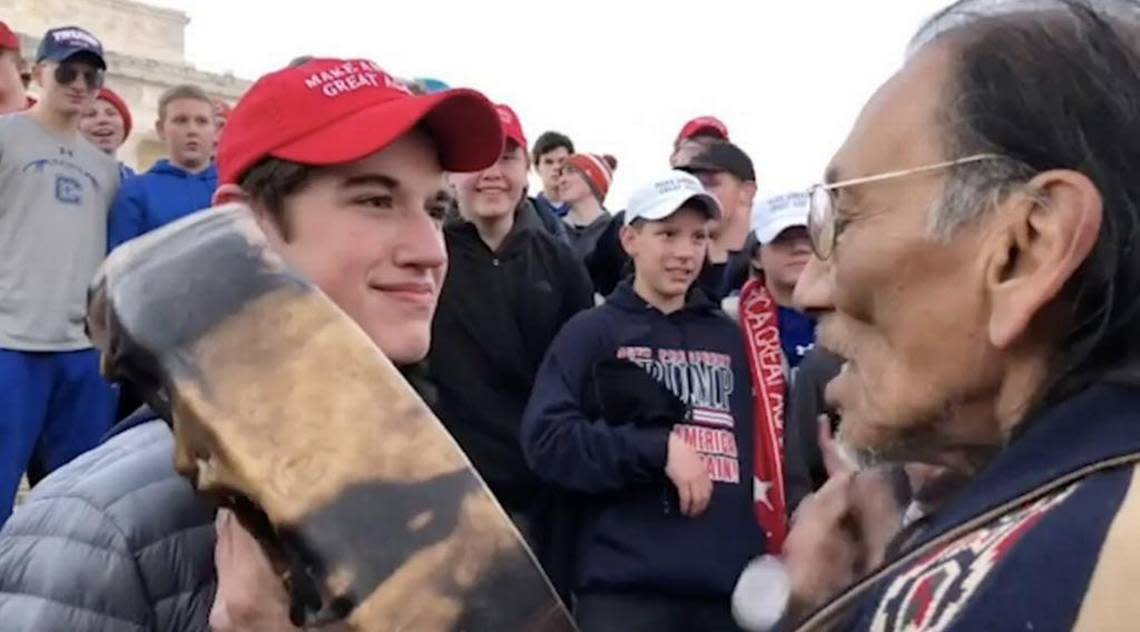Covington Catholic student’s 5 libel lawsuits against national media outlets dismissed
A federal judge has dismissed libel lawsuits against five media companies that a Kentucky student filed over an incident at the Lincoln Memorial in January 2019 in Washington D.C. which generated national news coverage.
Nick Sandmann, who was a 16-year old student at Covington Catholic in Northern Kentucky at the time of the incident, was the center of videos that went viral which showed Sandmann and Nathan Phillips, a Native American man, standing face to face as Phillips beat a drum and sang a traditional song while Sandmann smiled.
The five lawsuits were thrown out by United States District Eastern Kentucky Court Judge William O. Bertelsman, according to documents filed on Tuesday. The complaints were against media outlets The New York Times, CBS, ABC, Gannett Co. Inc, and Rolling Stone. Sandmann filed the lawsuits in federal court in Kentucky.
Sandmann’s attorney, Todd McMurtry told the Herald-Leader they were “disappointed,” and intend to file an appeal. He declined to comment any further.
Sandmann also declined a request for an interview, but told the Herald-Leader, “We’re fully prepared to argue these cases in the 6th Circuit.”
The ruling focused on statements published by the media outlets in which Phillips said Sandmann had “blocked” or “wouldn’t allow” him to leave as the two stood face to face at the monument.

Viral video with Native American made national news. Where is high school student now?
Sandmann argued these claims were false and defamatory, and that the companies had malicious intent in publishing them.
However, the judge ruled these specific actions are “objectively unverifiable and thus unactionable opinions.”
“Instead, a reasonable reader would understand that Phillips was simply conveying his view of the situation,” Bertelsman said. “And because the reader knew from the articles that this encounter occurred at the foot of the Lincoln Memorial, he or she would know that the confrontation occurred in the expansive area such that it would be difficult to know what might constitute “blocking” another person in that setting.”
The judge went on to say that Phillip’s statements, published in the articles, rely on assumptions about both Phillip’s and Sandmann’s state of mind, and neither party had any way of knowing what the other was thinking, or what they intended.
“It has long been established that someone’s state of mind is not capable of being proven true or false,” the judge declared.
“The media defendants were covering a matter of great public interest, and they reported Phillips’s first-person view of what he experienced. This would put the reader on notice that Phillips was simply giving his perspective on the incident,” Bertelsman wrote.
The judge added Phillips’s statements did not imply the existence of any non-disclosed defamatory facts, and only under such circumstances does a statement of opinion lose its constitutional protection.
“Therefore, in the factual context of this case, Phillips’s ‘blocking’ statements are protected opinions,” he determined.
Sandmann sued eight media outlets. Five of the cases were dismissed by a judge, and three of the cases were settled.
